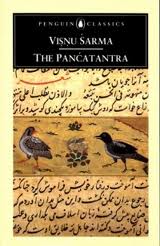Before Frederick Forsyth stormed into the scene, assassins had only one passport. They confined themselves to a territory and stuck to a local game. When assigned a job, they would meet the client, pick up the cash and finish it in the next few days. In all probability, the choice might have been a close range bullet or a crude bomb operated with a fuse that ran couple of meters.
Mr. Forsyth changed all that. He created Jackal, an expert marksman, who planned every move well ahead over a period of time.
Jackal had a global footprint, who could blend among any nationality and slip like mercury through the international immigration gates. He had a dozen passports and access to the best of long-range telescopic rifles, with a few specially designed for him. No one really saw him, and if anyone did, they saw only a carefully constructed phantom. And if they went beyond, they would simply die. Many people do die in Forsyth’s book ‘Day of the Jackal’ and Jackal nearly kills the head of the France.
In his new book ‘The Afghan’, Forsyth deals with global terrorism and the world famous terrorist Osama Bin Laden. The book traces the journey of a ‘mole’ in the Laden’s camp planted by the combined secret forces of West, to foil their latest terrorist act.
The book takes a quite a long to get to the main plot and just when you thought you were getting the hang of it, it ends with a whimper. Though the 3/4th of the book is well researched and takes a closer look at the world of terrorism, there is nothing you would probably not get from the internet or the dozens of available documentaries on 9/11. World, sure has changed for the readers, since the release of ‘The Day of the Jackal’, and internet has made it very easy for them to get an inside account of the men and machinery behind terrorism or for that matter, anti terrorism.
In addition, Forsyth dishes out the stereotype characters which includes the protagonist, Colonel Martin, an almost-retired-yet-forced-into-one-last-mission. Then you have the usual ‘managers’ from the secret world who only wake up in the middle of the night to take phone calls or engage themselves in long-drawn conversations on ‘what-would-happen’ scenarios, rather than letting their mole get to some action. And to top it all, the red herring before the climax, sure does make things pretty dull and reminiscent of the yester novels.
To his credit, Forsyth skillfully weaves the world of the real Afghan whose place eventually Martin would take and juxtaposes the progress of the two quite well. Though it does make a good reading and for some time you are lost in the world of sand and wind, you get impatient when things do not happen in this world. And you miss the drama and action, Forsyth’s novels are famous for.
However, if you are a die-hard Forsyth fan (like me), it is a worth a read once. But at the end of it, you might feel it is time to get back to Forsyth’s old novels than risk his new ones.:)



